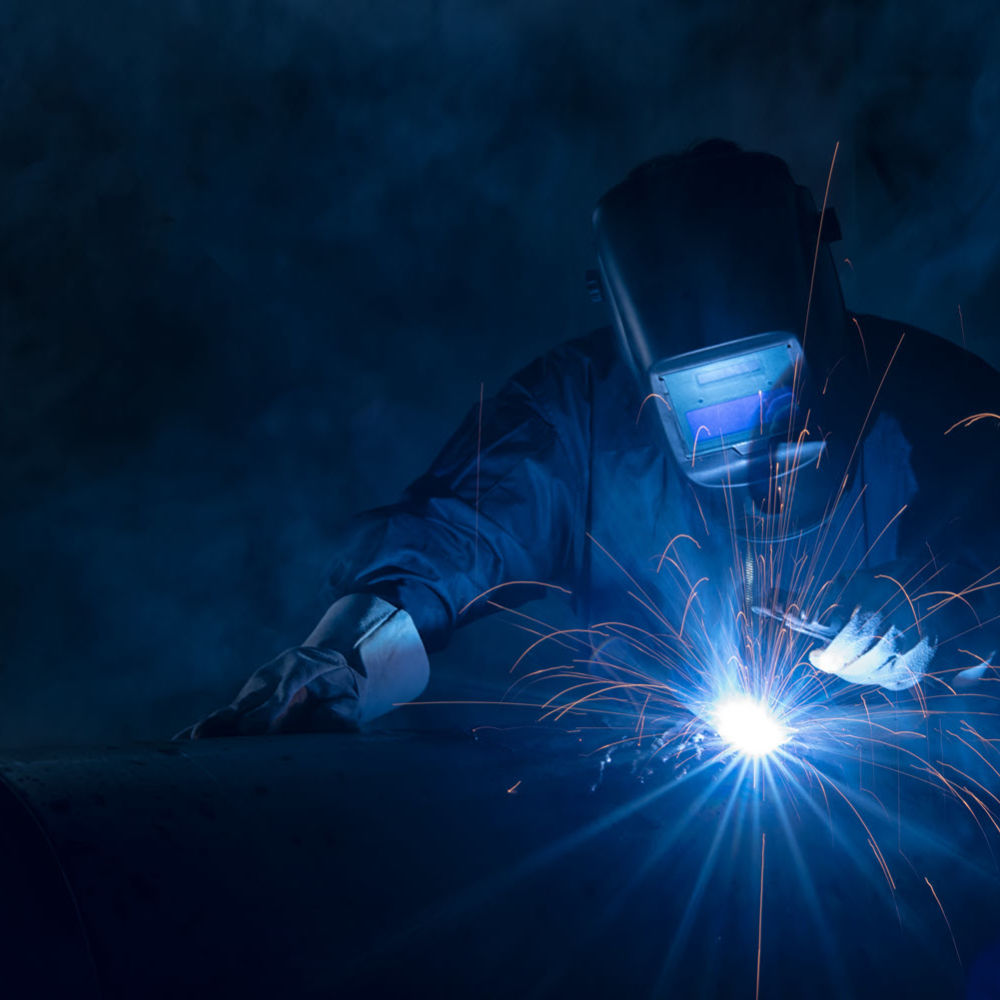Applications to Welding and Joining
Simulate the following as a function of material chemistry and temperature:
Application Examples
Diffusion in Dissimilar Metal Welds
Dissimilar metal welds can experience localized failure at the interface due to carbon diffusion. This can be due to the welding process, post-weld heat treatment, or service conditions. Carbon diffuses from the steel to the nickel causing a loss of strength in the steel and a locally hard zone in the nickel. The extent of property degradation is related to the extent of carbon diffusion, which can be predicted using the Diffusion Module (DICTRA) in Thermo-Calc.
This figure shows the simulated carbon profiles across the joint resulting from welding and post weld heat treatment for an AISI 8630 steel welded with 3 different Ni-base filler metals. As can be seen, the choice in filler metal has a significant influence on the carbon diffusion behavior.

Weld Cracking in Ni-base Alloys
Many Ni-based alloys are susceptible to different weld cracking phenomena that can be sensitive to alloy chemistry. During the solidification of weld metal, the alloying elements segregate to either the liquid or the solid and cause local composition differences. Segregation of aluminum (Al), titanium (Ti), and/or niobium (Nb) causes local variances in gamma prime (γ′) and gamma double prime (γ″) precipitation kinetics and volume fractions, leading to a loss of creep strength. Depending on alloy chemistry, this segregation can also cause formation of low melting point eutectics, which can then cause solidification cracking. The extent of segregation can be predicted using the Scheil Solidification Simulation Calculator included in Thermo-Calc.
This figure shows the segregation across a hypothetical dendrite for Alloy 718. Nb, Mo, and Ti segregate heavily to the dendrite boundary, which will have an impact on the local precipitation behavior.

Learn More about Applications to Joining and Welding
Thermodynamic and Kinetic Simulations on Joining and Additive Manufacturing Processes for an ICME Framework
Weldability of Nickel-based Alloys: Solving Problems with the Assistance of Computational Techniques
Retention of Delta Ferrite in the Heat-Affected Zone of Grade 91 Steel Dissimilar Metal Welds
Non-isothermal prior austenite grain growth of a high-Nb X100 pipeline steel during a simulated welding heat cycle process
Thermodynamic and kinetic models for describing microstructure evolution during joining of metals and alloys
Optimizing the Diffusion Welding Process for Alloy 800H: Thermodynamic, Diffusion Modeling, and Experimental Work
Thermodynamic and Kinetic Simulation of the Brazing Process Applied to Ni-Base Superalloys






